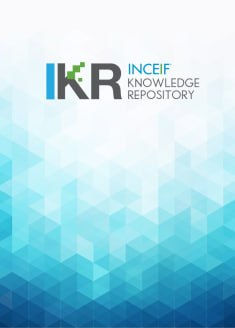
Browse by Author "Aftab Parvez Khan"
Results Per Page
Sort Options
- PublicationEssays on the comparative performance, volatility, tracking error and trading characteristics of Islamic versus conventional equity indices and exchange traded fundsAftab Parvez Khan; Obiyathulla Ismath Bacha; Abul Mansur Mohammed Masih (INCEIF, 2015)
The meaning of investments is that you sacrifice something valueable now in order to gain benefit from it in the future. Timing of the investment is of great importance (McDonald & Siegel, 1986, p. 724). One could invest in real assets, i.e. land, buildings, machines, and knowledge which are used in order to produce future goods and services. Investments could also be made in financial assets, such as stocks and bonds, which do not contribute directly to production but are used as claim-holdings on real assets. There are three main types of financial assets: fixed-income or debt securities, derivative securities and equity. Thus, investments operate mainly in financial markets. The major players of the financial market are firms, which mostly raise funds; households, which mostly save; and governments, which may act as borrowers as well as lenders. Since corporations and governments do not sell the largest part of their securities directly to individuals, the role of financial intermediaries is of great importance. Between the security issuer and the ultimate security owner, in most of the cases, financial institutions such as mutual funds, pension funds, insurance companies and banks facilitate the process (Bodie et al., 2009, p. 1-33). One of the most common measures of stock and bond market performance is by indexes. Indexes are computed and published daily, providing investors possibilities to easily monitor performance of a particular equity (Bodie et al., 2009, p. 38). As globalization has spread international trade and cross border transactions have increased. Thus, daily information of the performance of indexes from all over the world has become a very important part of daily news for investors.
- PublicationPerformance and trading characteristics of exchange traded funds: developed vs emerging marketsAftab Parvez Khan; Abul Mansur Mohammed Masih; Obiyathulla Ismath Bacha (Bursa Malaysia, 2015)
Exchange Traded Funds (ETFs) are one of the most successful financial innovations of the last decades. The main focus of this study is to examine the risk adjusted performance, tracking error and trading characteristics of emerging and developed markets ETF. 43 passively managed equity ETFs have been chosen to cover both markets. The results indicate that the emerging markets are less efficient in terms of index replication and possess higher tracking error compared to the developed market ETF. Conversely, emerging markets provide better risk adjusted performance. Last but not least, it is also found that assets size has positive impacts towards ETFs performance and in contrast, the expense ratio has a negative impact on ETFs performance. To determine the policy matters, investment types and strategy for the two different types of capital market products, this study is quite relevant to the individual investor, institutional investors, policy makers and the regulators.
- PublicationTime varying correlation between Islamic equity and commodity returns: implications for portfolio diversificationAftab Parvez Khan; Sarkar Humayun Kabir; Omar K. M. R. Bashar; Abul Mansur Mohammed Masih (Australian Academy of Business and Social Sciences, 2014)
This paper aims at investigating the time varying relationship between Islamic equity and commodity returns in order to examine how combination of Islamic equities and commodities contribute to the benefits of portfolio investors and managers. In order to investigate this relationship, we employed multivariate GARCH method on return series of five different commodity groups (energy, precious metals, agricultural, non-ferrous metals and softs group), Dow Jones spot commodity index as a proxy of an aggregate commodity market and Dow Jones Islamic index over the period January 3, 2001 - March 28, 2013. Our findings show that correlations between commodity and Islamic stock markets’ returns change in different time periods and these two markets moved very closely during 2008 financial crisis in particular. Besides, volatility of returns in both markets reached at their peaks during the 2008 crisis period. We also show that despite sharing some common features, commodities cannot be considered as a homogeneous asset class: a speculation phenomenon is for instance, highlighted for energy sector comprising oil, while the safe-haven role of gold is evidenced, which constitutes a part of precious metal sector.
Abstract View
2676881
View & Download
198753
